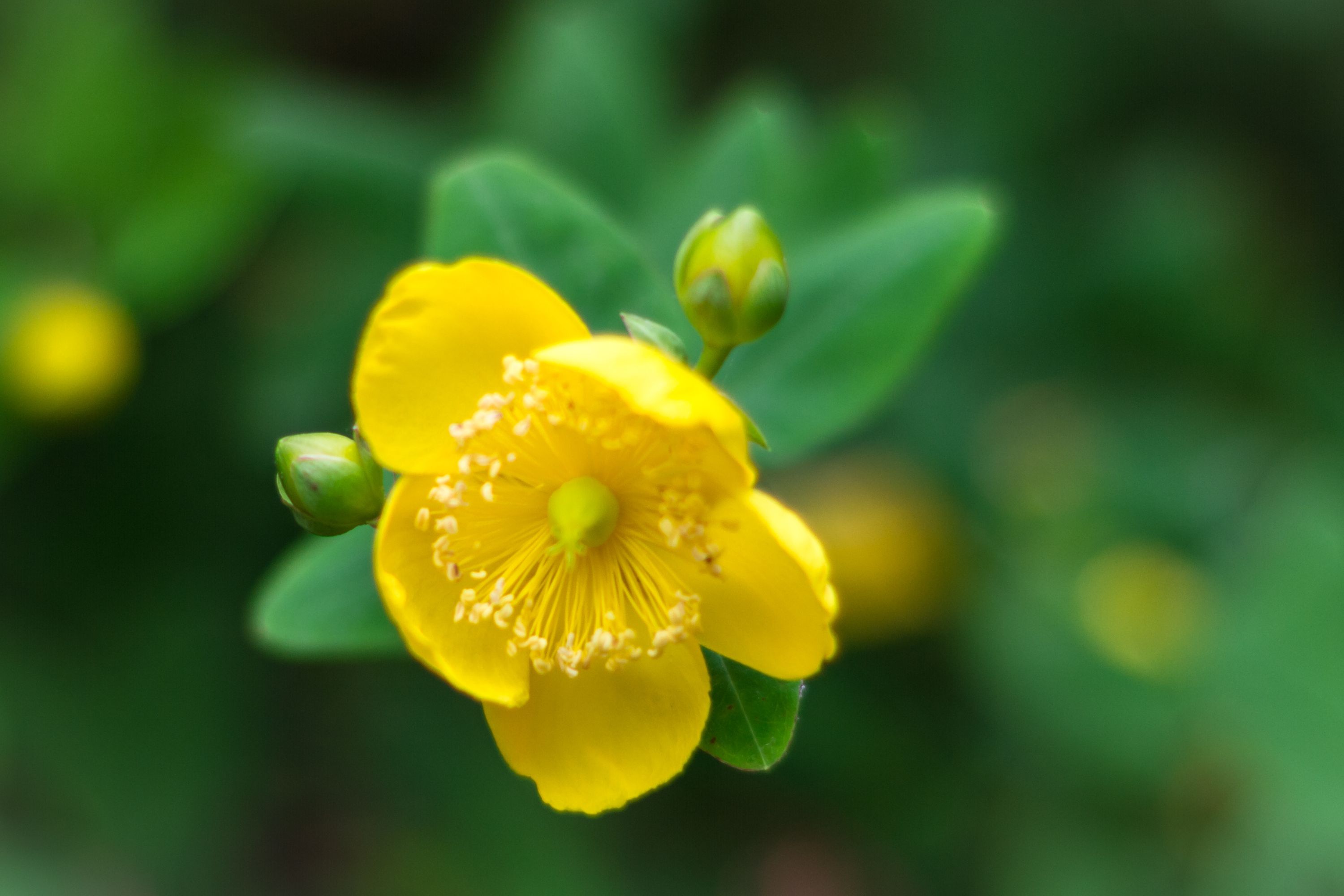St. Anthony's Turnip
(Ranunculus bulbosus)

Description
“Pet poisonous” – Toxic parts: entire plant esp. leaves Ranunculus bulbosus, commonly known as the St. Anthony's turnip, is a flowering plant species that belongs to the family Ranunculaceae. It is native to Europe, and is also found in North America, Africa, and Asia. In this article, we will delve into the botanical description, habitat, cultivation, and medicinal properties of Ranunculus bulbosus. Botanical Description Ranunculus bulbosus is a perennial herb that grows up to a height of 20-30 cm. The plant has a bulbous root, which is yellowish-white and is about the size of a hazelnut. The stem of the plant is erect, smooth, and branched towards the top. The leaves of the plant are basal, petiolate, and are divided into 3-5 lobes, each of which is further divided into toothed segments. The flowers of the plant are bright yellow in color, and have a diameter of about 2-3 cm. They are borne on long peduncles that emerge from the axils of the upper leaves. The fruit of the plant is an achene, which is small and has a hairy surface. Habitat Ranunculus bulbosus, commonly known as St. Anthony's turnip, is a plant species native to Europe, but it can also be found in North America, Africa, and Asia. It prefers moist, well-drained soil and can be found growing in meadows, pastures, and along roadsides. It is often seen growing alongside other wildflowers such as buttercups, daisies, and dandelions. The plant is typically found in areas with a temperate climate. Cultivation Ranunculus bulbosus can be grown from seed or by dividing the bulbs in the autumn or early spring. The plant prefers moist, well-drained soil and partial shade. It can be grown in pots or containers, or in the ground. The plant requires regular watering and feeding during the growing season, and should be protected from frost during the winter months. It is a relatively easy plant to cultivate and can add a beautiful splash of yellow to any garden or wildflower meadow. However, it should be noted that the plant contains a toxic compound called ranunculin, which is converted into the blistering agent protoanemonin when the plant is crushed or bruised. Therefore, caution should be exercised when handling the plant. Medicinal Properties Ranunculus bulbosus has been used in traditional medicine for its analgesic and anti-inflammatory properties. The plant contains a toxic compound called ranunculin, which is converted into the blistering agent protoanemonin when the plant is crushed or bruised. Despite its toxicity, the plant has been used to treat a variety of ailments such as arthritis, gout, and rheumatism. The plant has also been used to treat skin conditions such as warts, blisters, and burns. Conservation Status The conservation status of Ranunculus bulbosus is currently considered "Least Concern" according to the International Union for Conservation of Nature (IUCN). This means that the species is not considered to be at risk of extinction at the global level. However, local populations of the plant may be impacted by habitat loss or degradation, and in some areas, the plant may be considered rare or threatened. Therefore, it is important to monitor populations of Ranunculus bulbosus and protect its habitat to ensure the continued survival of the species. Conclusion Ranunculus bulbosus is a beautiful and interesting plant that is native to Europe, but can be found in many parts of the world. Its bright yellow flowers and unique bulbous root make it a popular choice for gardens and wildflower meadows. Despite its toxicity, the plant has been used for centuries in traditional medicine to treat a variety of ailments. As with any medicinal plant, it is important to exercise caution and seek professional advice before using Ranunculus bulbosus for medicinal purposes.
Taxonomic tree:







